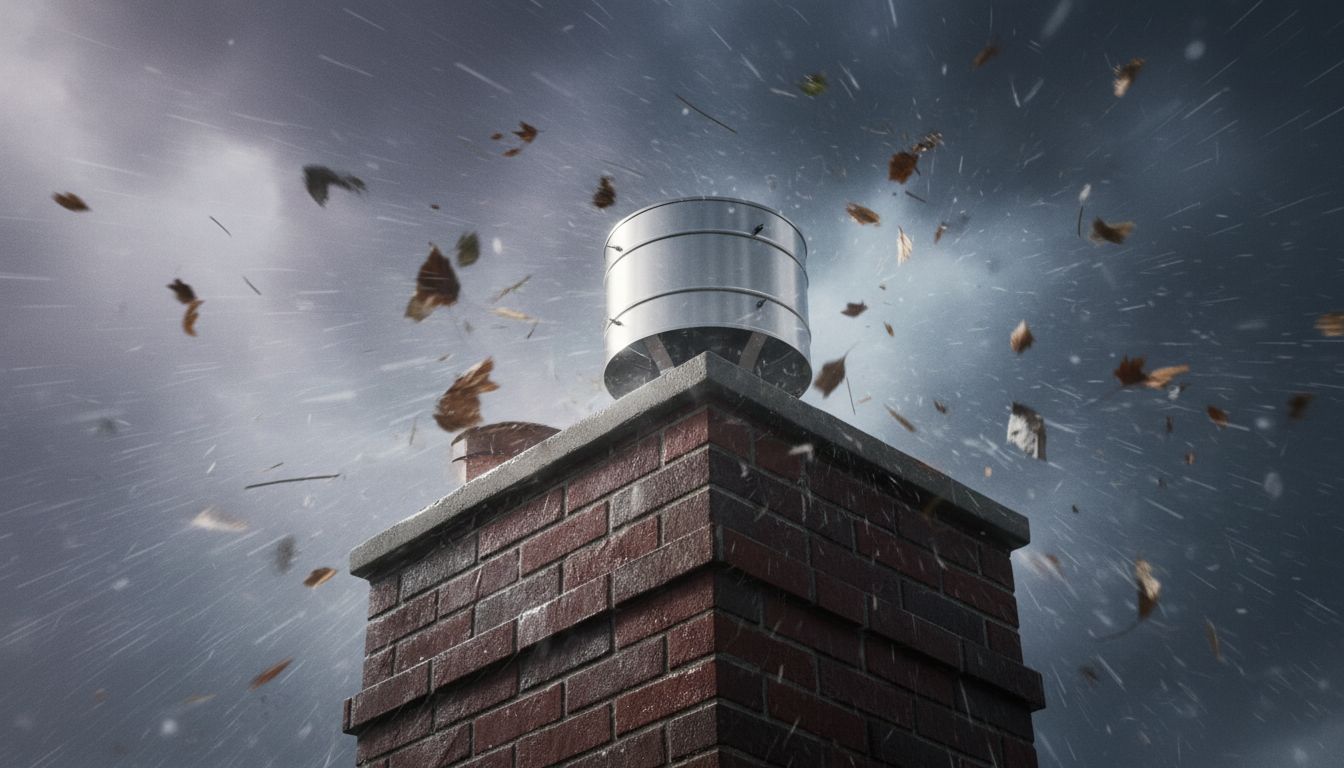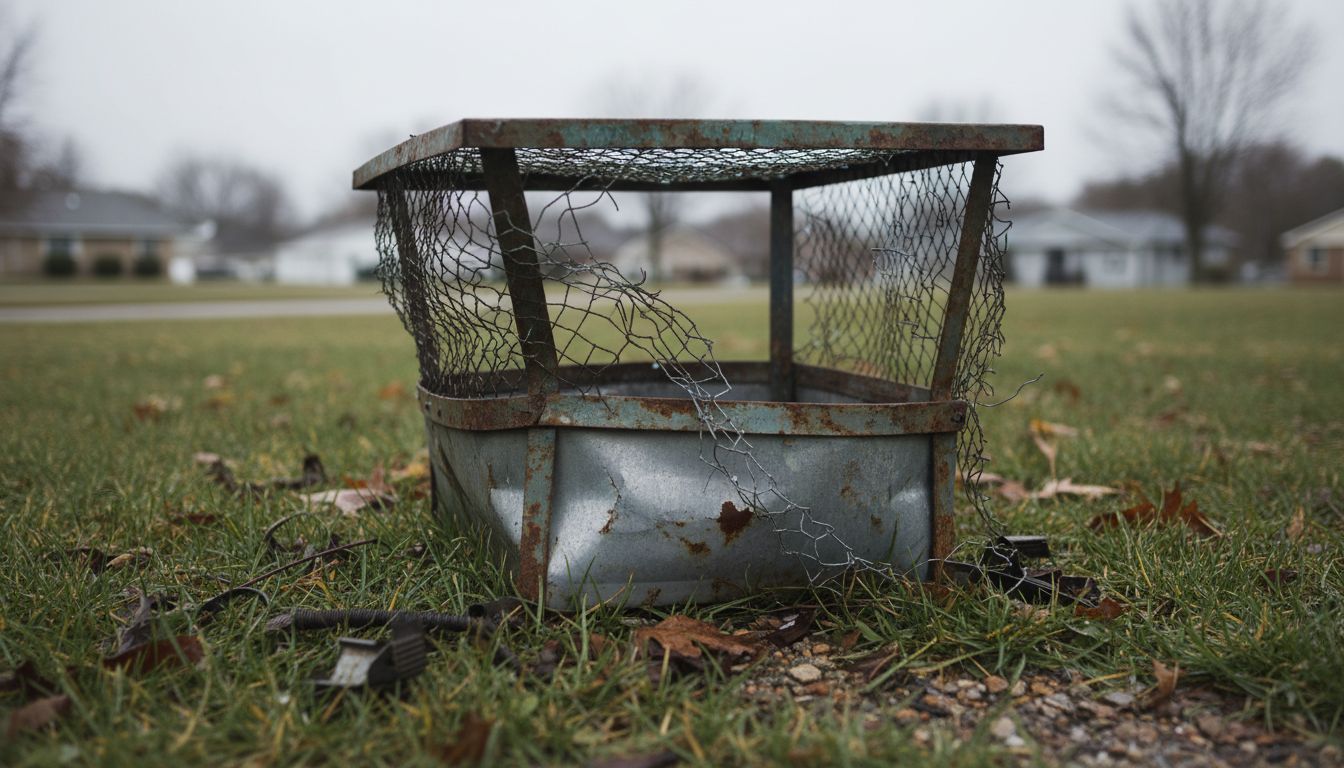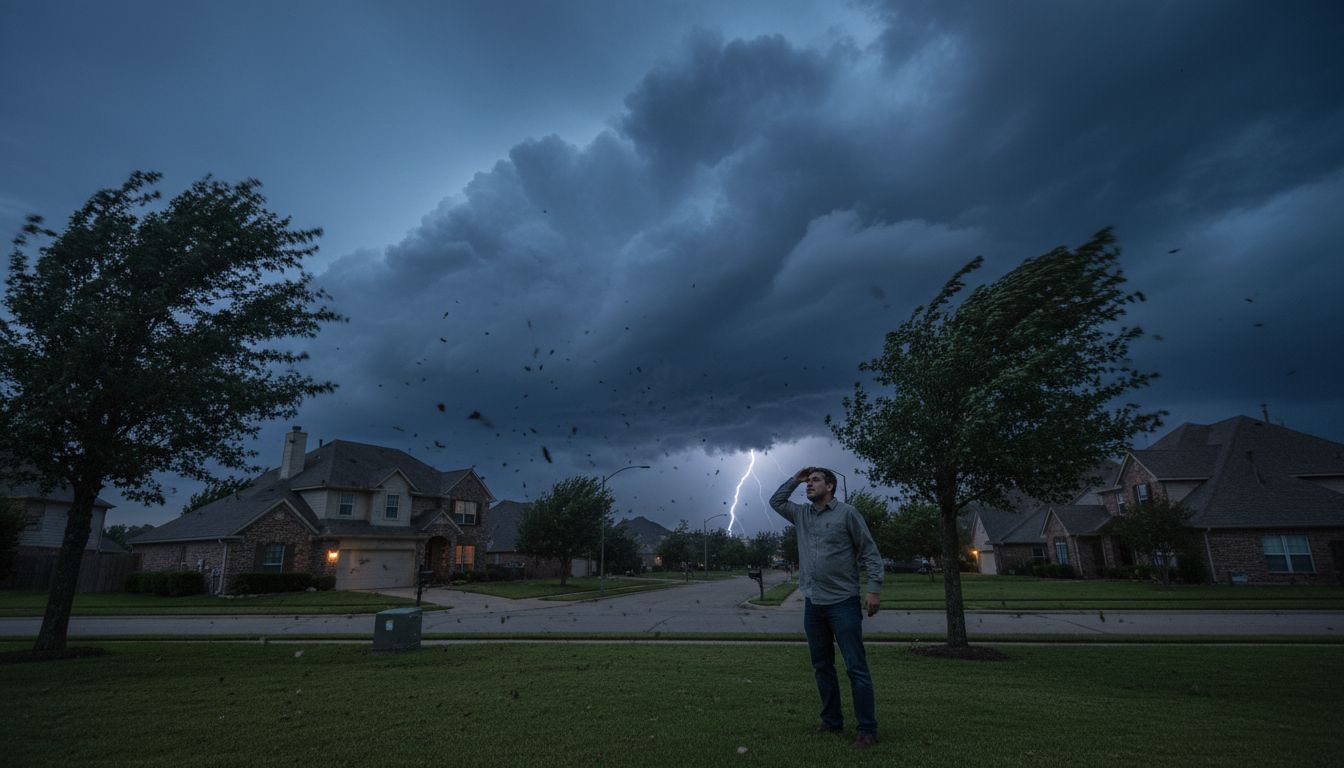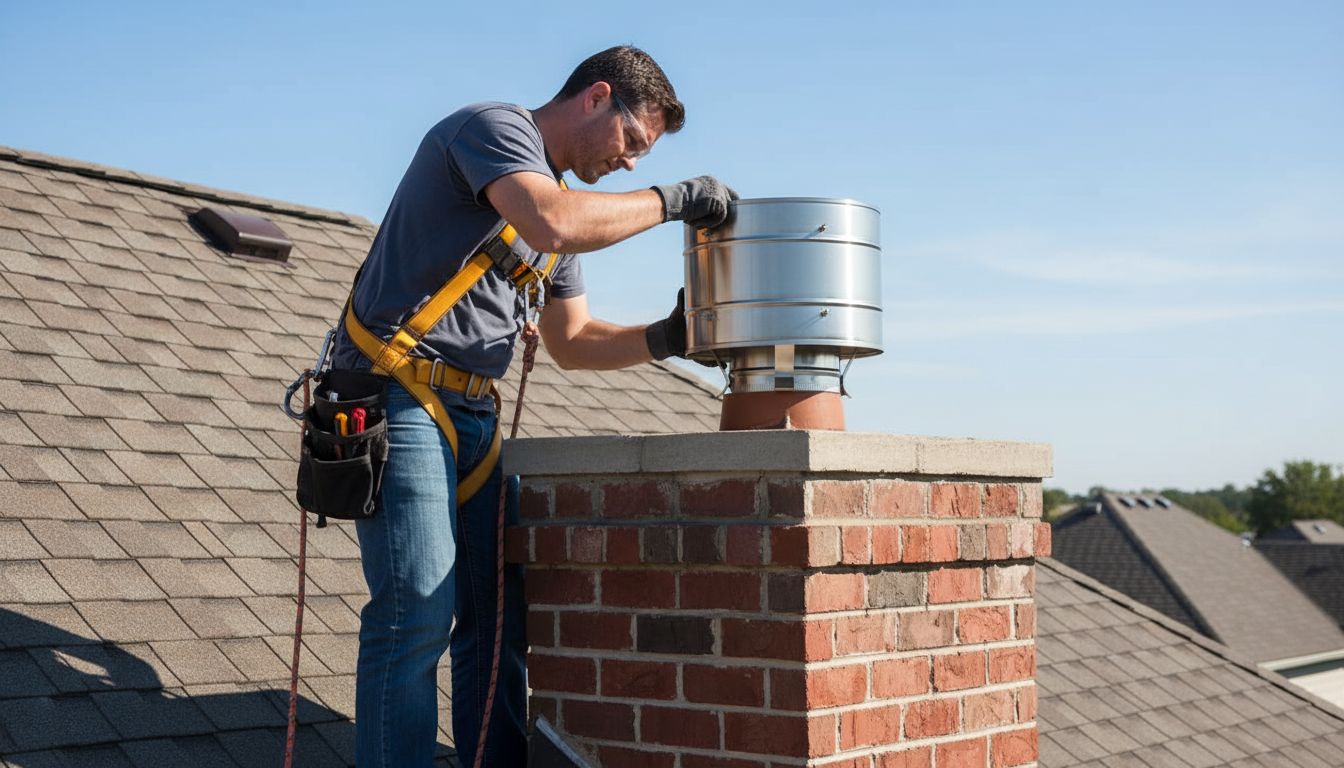Wind-Resistant Chimney Caps vs. Standard Caps: Why the Upgrade Matters in Storm-Prone Areas
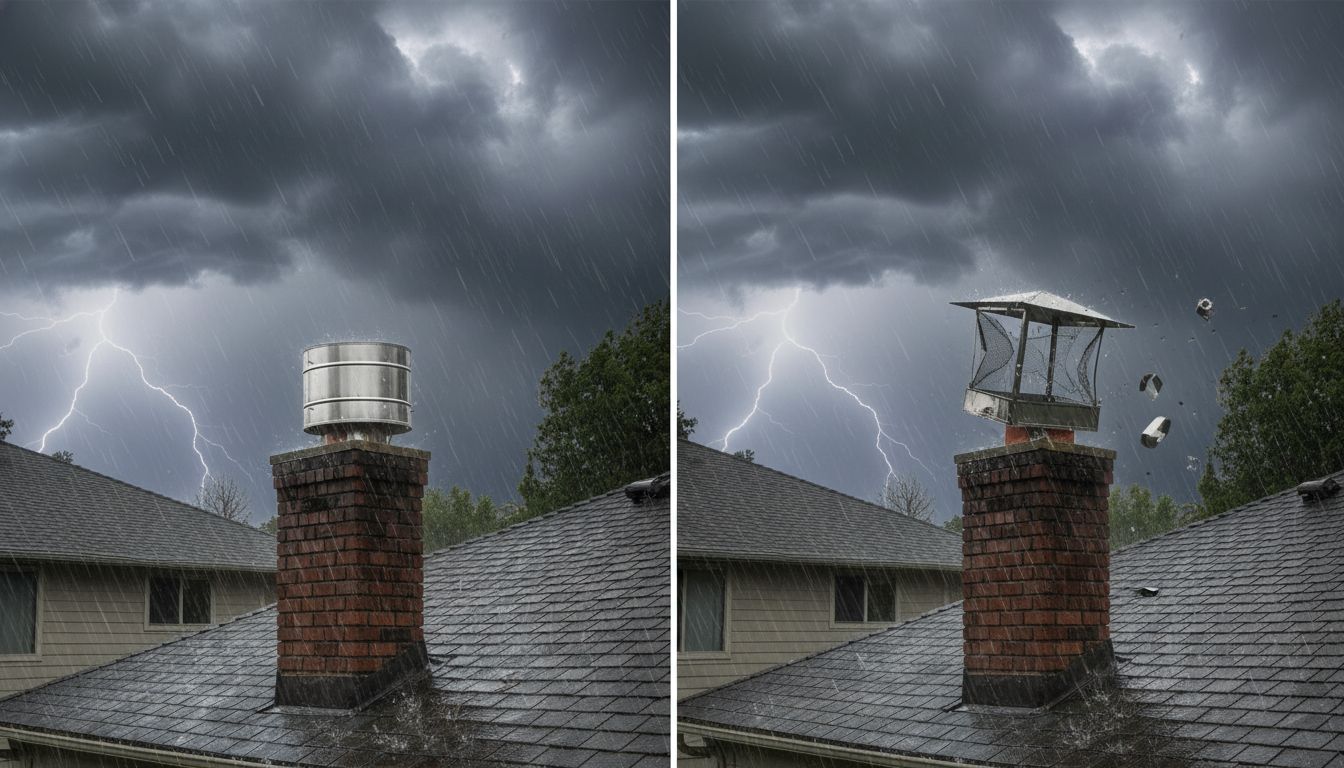
If you live anywhere that gets serious storms, you’ve probably wondered: “Is there really that big of a difference between a cheap chimney cap and an expensive one?”
Short answer: Yes. Huge difference.
I’ve seen way too many homeowners learn this lesson the hard way – finding their “bargain” cap in the neighbor’s yard after a storm, or dealing with water damage that cost ten times what a good cap would have cost in the first place.
Let’s talk about what actually separates a quality wind-resistant cap from the standard ones you’ll find at big box stores, and why it matters if you’re in a storm-prone area.
The Real Difference Starts With How They’re Built
Standard Caps: Built to a Price Point
Walk into most home improvement stores and you’ll see rows of chimney caps for $50–$150. They all kind of look the same, right? Shiny metal, some mesh on the sides, seems like it should do the job.
Here’s what you’re usually getting:
Thin metal construction – We’re talking sheet metal that you can literally dent with your thumb. Most standard caps use metal that’s about as thick as a soda can (okay, maybe slightly thicker, but not by much). When wind hits this, it bends. Sometimes permanently.
Basic attachment systems – Usually a couple of screws or a simple clamp band. These work fine in calm weather. But when you get 50, 60, 70 mph winds? That’s when you find out how little holding power they actually have.
One-size-fits-most approach – Standard caps come in set sizes. If your chimney is 8.5 inches and they make 8″ and 9″ sizes, you’re supposed to pick one and hope it works. Gaps mean wind gets in, water gets in, and the cap doesn’t seal properly.
Mass production overseas – Most budget caps are made in bulk factories overseas where the goal is hitting a price point, not building something that’ll last 20 years.
I’m not saying these caps are completely useless. In mild climates with occasional light rain and no serious wind, they’ll probably do okay for a few years. But “okay for a few years” isn’t what you want when you’re talking about protecting your home.
Wind-Resistant Caps: Built to Last Through Hell
Premium wind-resistant caps cost more – usually $250–$500 depending on size and style. But here’s what that extra money actually buys you:
Heavy-duty metal – About twice as thick as standard caps. We’re talking metal that doesn’t bend when you push on it — the kind that stays rigid even when wind is hammering it from all sides.
Serious mounting systems – Multiple attachment points with real holding power. Some use heavy-duty clamps that grip all the way around. Others bolt directly through your chimney crown with anchors. The goal is to make it so secure that the wind would have to rip apart your chimney to take the cap off.
Custom fit or precise sizing – Better caps either come in way more size options or are made custom to your exact measurements. This means no gaps, proper seal, and the cap sits exactly where it should.
American-made quality – Many premium caps are manufactured in the USA with quality control at every step. You’re getting caps that are inspected, tested, and built to actually perform.
The difference in the wind isn’t subtle. Standard caps shake, rattle, and fight the wind. Quality caps just sit there, solid, doing their job.
What Actually Happens in High Winds
The Forces at Play
Wind doesn’t just blow across your roof in a nice, smooth flow. It hits your chimney and creates chaos. You get:
- Direct impact pressure – Wind slamming straight into the cap
- Uplift forces – Wind going over and around the cap trying to suck it up and off
- Side loads – Gusts hitting from different angles, trying to twist and bend the cap
- Vibration and fatigue – Hours of shaking and rattling that weakens weak points
A standard cap that’s held on with three small screws is fighting all these forces with maybe 20–30 pounds of holding strength total. A proper wind-resistant cap with a real mounting system? Easily 150–200 pounds or more of holding strength.
That’s the difference between “might make it through the storm” and “definitely making it through the storm.”
What Fails First on Standard Caps
- Mesh tears away – Thin mesh rips right off the frame.
- Attachment screws pull out – Weak anchoring or poor material leads to cap failure.
- The cap bends – Thin metal warps and stops working properly.
- Rust – Budget metals corrode fast, especially near coasts.
Material Quality: Why It Actually Matters
This is where most of the cost difference comes from.
304 Stainless Steel
The real deal — genuinely rust-resistant, handles weather well, and lasts for decades. Perfect if you’re more than 25 miles from saltwater.
316 Stainless Steel (Marine Grade)
The upgrade for coastal homes. It contains molybdenum, making it ultra-resistant to salt air and ocean spray. Regular stainless rusts eventually — this doesn’t.
Budget “Stainless”
Thin, low-quality metal that technically qualifies as stainless but rusts fast. Often shows rust spots within a year in humid areas.
The Thickness Factor
Thin metal bends, sags, and dents easily. Thicker metal (used in wind-resistant caps) costs more but stays solid under pressure, ice, and wind.
How They Handle Specific Storm Challenges
Hurricane-Force Winds (75+ mph)
Standard caps: gamble — often bend, tear, or blow away.
Wind-resistant caps: tested for 100+ mph winds, with reinforced panels and over-engineered mounting.
Heavy Snow and Ice Loading
Standard caps: sag or ice over.
Wind-resistant caps: shed snow easily and resist sagging or blockage.
Severe Thunderstorms and Tornadoes
Standard caps: fail in 60–80 mph winds.
Wind-resistant caps: hold strong except in direct tornado hits.
Year-Round Wind Exposure
Standard caps fatigue over time; wind-resistant caps stay sturdy for decades.
The Real Cost Comparison
- Standard Cap Route: $75 cap + $150 install, replacements every few years, $800–$1500+ over 10 years.
- Wind-Resistant Route: $350 cap + $200 install, lifetime warranty, ~$550 total over 10 years.
The Hidden Costs Nobody Talks About
- Time spent replacing and repairing
- Roof safety risks
- Water damage repair
- Energy loss and storm stress
Installation: Why It Makes or Breaks Performance
What Good Installation Looks Like
- Proper sizing and secure mounting
- Correct sealing to prevent leaks
- Code compliance for spark arrestors and height
The Warranty Catch
Most lifetime warranties require professional installation — DIY can void coverage. Do it right the first time to keep your warranty valid.
Storm Classifications and Cap Requirements
- Moderate winds: heavy-gauge stainless cap
- High winds: wind-resistant cap with multi-point mounting
- Hurricane zones: hurricane-rated cap, pro install
- Coastal areas: 316 stainless steel
- Tornado alley: heavy-duty wind-resistant cap
What to Look For When Shopping
Red Flags
- Under $100 pricing
- No mention of metal gauge or grade
- Flimsy mesh or poor construction
- No clear warranty or made overseas
Green Flags
- 304 or 316 stainless clearly listed
- Specified gauge and real lifetime warranty
- Made in USA with good reviews
Key Questions to Ask
- What gauge is the metal?
- 304 or 316 stainless?
- Warranty details?
- Wind testing data?
- Pro install required?
- Return policy?
Maintenance: Keeping Your Investment Working
Annual Inspection Checklist
- Secure mounting
- No rust or corrosion
- Clean, clear mesh
- Cap level and undamaged
- Rotating parts spin freely
When to Call a Professional
- Loose or rusted cap
- Storm or impact damage
- Torn mesh
- Not safe to inspect yourself
After Major Storm Check
After 50+ mph winds, visually inspect from the ground — quality caps mean peace of mind.
Real Talk: Is the Upgrade Worth It?
If you live with regular storms, hurricanes, high winds, or coastal exposure — yes, 100% worth it. The “cheap” route costs more in the long run.
Even in mild climates, a wind-resistant cap provides long-term peace of mind — like insurance that saves money over time.
Why Chimcare Chimney Caps for Storm-Prone Areas
- American-made with strict quality control
- Heavy-gauge stainless steel
- Real lifetime warranties
- Custom sizing available
- Installation support included
Customers from Florida to the Midwest have trusted Chimcare for years — through hurricanes, salt air, and severe storms.
Ready to Upgrade?
If you’re tired of worrying every storm season, it’s time for a real cap.
Call us: 503-300-1926
Visit: chimcarechimneycaps.com
Free consultation to find the right cap for your chimney, location, and wind exposure.
About Chimcare Chimney Caps
We make chimney caps the right way — built for extreme weather, backed by warranties we honor, and installed by professionals who know chimneys. American-made quality that protects your home for decades, not years.

 We Ship Anywhere USA & Canada
We Ship Anywhere USA & Canada


